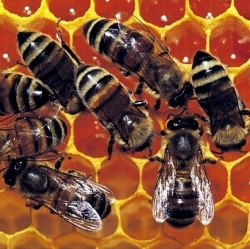
Evolution in bacteria shows that adaptations can be undone, but rarely. Ever since Darwin proposed his theory of evolution, scientists have wondered whether evolutionary adaptations can be reversed. Answering that question has proved difficult, partly due to conflicting evidence.
In 2003, scientists showed that some species of insects have gained, lost and regained wings over millions of years. But a few years later, a different team found that a protein that helps control cells’ stress responses could not evolve back to its original form.
Jeff Gore, assistant professor of physics at MIT, says the critical question to ask is not whether evolution is reversible, but under what circumstances it could be. "It’s known that evolution can be irreversible. And we know that it’s possible to reverse evolution in some cases. So what you really want to know is: What fraction of the time is evolution reversible?" he says.
By combining a computational model with experiments on the evolution of drug resistance in bacteria, Gore and his students have, for the first time, calculated the likelihood of a particular evolutionary adaptation reversing itself. They found that a very small percentage of evolutionary adaptations in a drug-resistance gene can be reversed, but only if the adaptations involve fewer than four discrete genetic mutations.
